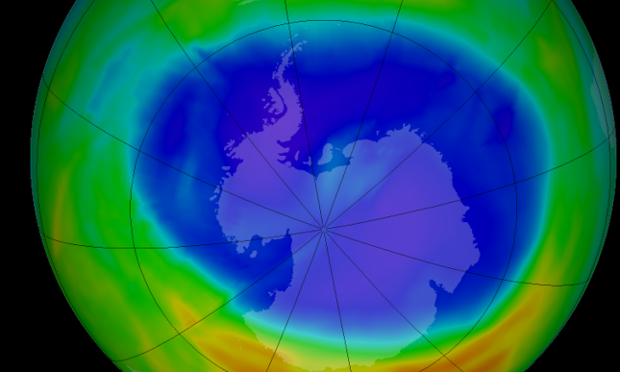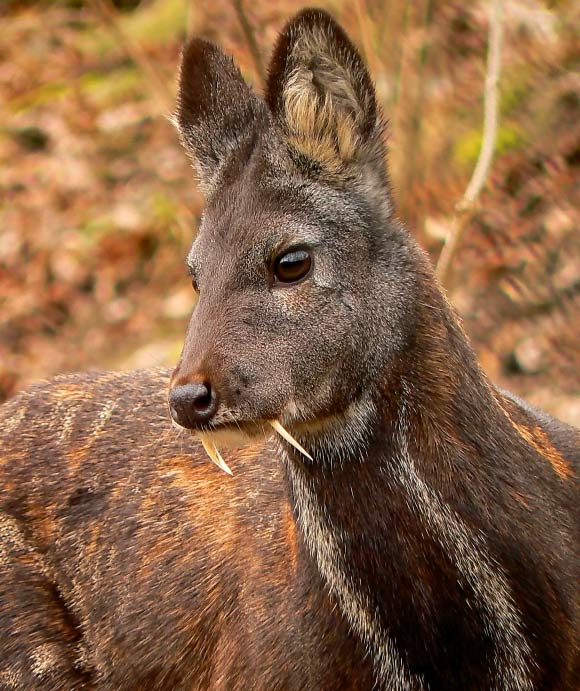
How about some good news? We could all use some, right? OK, here’s your sunshine-y happy times for the week: The hole in the ozone layer hovering over Antartica, that protective film of gas that keeps Earth protected from solar radiation, hasn’t gotten any bigger. Let’s forget that it’s still roughly the size of North America (you know, not just the United States, but Canada, Mexico, et al.) and rejoice for a moment.
Ah.
Felt good, right? Rejoicing?
Back in the late ‘80s/early ‘90s when I was just a young ‘un, all I would hear about is how I wouldn’t live to be an old ‘un because the ozone layer was all that was keeping me safe from getting microwaved by the sun—and that barrier between me and certain doom was becoming about as flimsy as Saran Wrap. But here I am, a year closer to 40, more or less alive and not human bacon, and here you are, too. Pretty neat, huh?
We have the Montreal Protocol to thank for this. Back in 1987, people a lot brainier than I am got together for the Vienna Convention for the Protection of the Ozone Layer and signed an international treaty (the aforementioned protocol) to phase out the production of chemicals that deplete the ozone layer, such as chlorofluorocarbons (CFCs).
You see, back then scientists, who are often the ones charged with finding out such things, observed that the ozone layer, the only thing really keeping Earth from turning into Mars or whatever, was being depleted. They discovered that CFCs and whatnot were contributing to this, so the international community got together and put the kibosh on these substances. I guess back in those days, people in charge were more apt to come together and get things done for the good of people and the planet instead of politicizing issues and arguing scientific facts in order to misinform voters, win elections and make their big-money corporate donors happy. But you know, that’s just a theory of mine. Today, all UN-recognized nations have ratified the treaty (according to EPA.gov), and Sept. 16 is designated as the International Day for the Protection of the Ozone layer. That may be the most boring holiday ever, but hey, sure beats getting pummeled by UV rays.
This is all great, but I can already hear you saying, “But the hole in the ozone layer still measures 24.1 million square miles,” assuming you have the exact figures in front of you like I do. Yes, it is. And that’s totally huge, but it’s not as huge as it could have been if the Montreal Protocol never happened. According to the UN Environment Program (UNEP) and the World Meteorological Organization (WMO), without the Montreal Protocol, ozone-depleting substances in the atmosphere could have increased tenfold by 2050. In laymen’s terms, I suppose that would mean if you decided to hit the beach 36 years from now, you’d have to make sure you packed your SPF eleventy-billion sunscreen.
UNEP and WMO believe that it will probably take another 35 years for the ozone layer to recover from all the damage done to it, so your kids and grandkids are stoked. By 2030, UNEP says the Montreal Protocol “will have prevented 2 million cases of skin cancer annually, averted damage to human eyes and immune systems, and protected wildlife and agriculture,” as reported by Theguardian.com. So chalk one up for humanity.
But it’s also a win for all the critters on the planet. There’s so much awesome beasties living on this giant blue marble, like whale sharks and dogs and piglets and elephants and…sheesh, OK, kittens too. Relax, I didn’t forget about kittens. And while we’re at it, how about the Kashmir musk deer? Wait. What?
You might not have heard about the Kashmir musk deer, because no one’s seen any of these things since 1948. They’re kind of difficult to track because they prefer to inhabit dense brush and rocky terrain. They also reside in northeast Afghanistan, which, as you’ve probably heard, hasn’t been the most welcoming place to visitors the past decade or so.
The musk deer are cool because they’re smaller (and therefore cuter and cuddlier) than your run-of-the-mill deer. Adults weigh just a bit more than your average cocker spaniel. Musk deer also don’t have antlers, so you won’t see their heads mounted at your favorite old man bar, though their scent glands are highly sought after on the black market (gross). The males do, however, have VAMPIRE FANGS.
Well, not really. I mean, they look like vampire fangs, but like other deer, the Kashmir musk deer is herbivorous. Males use the fangs to battle each other during mating season. Tiny, fanged deer beating up on one another for a female’s affection would probably put the UFC out of business if someone had the chutzpah to put it on television, just saying.
So when you hear the ozone layer is on its way to recovery, rejoice. Not just because you won’t get skin cancer (which is a plus) but because somewhere in the mountains of Afghanistan, there’s some diminutive deer with vampire fangs, just grazing and being a total badass, that doesn’t even know what the hell an ozone layer is.



Comments